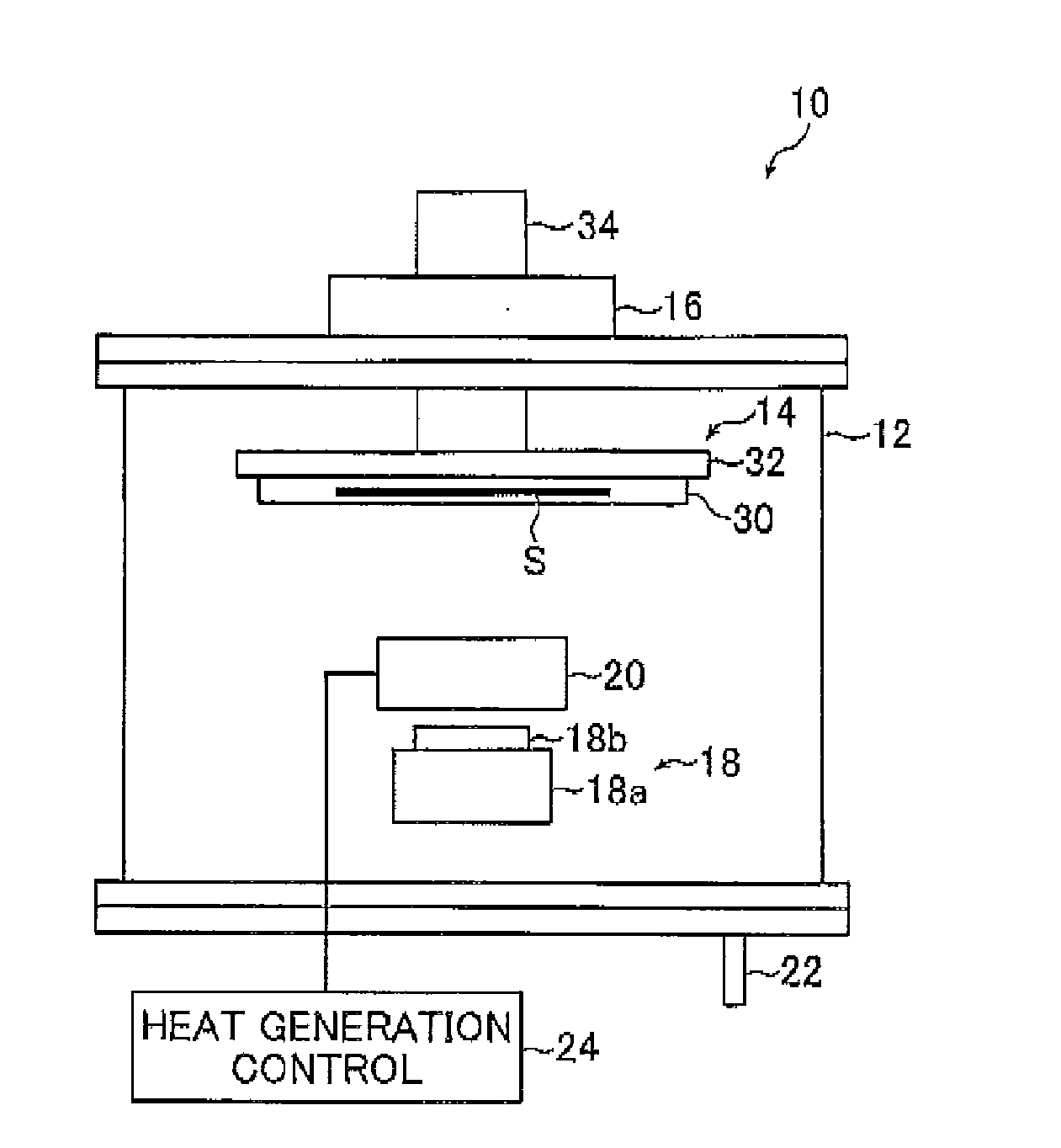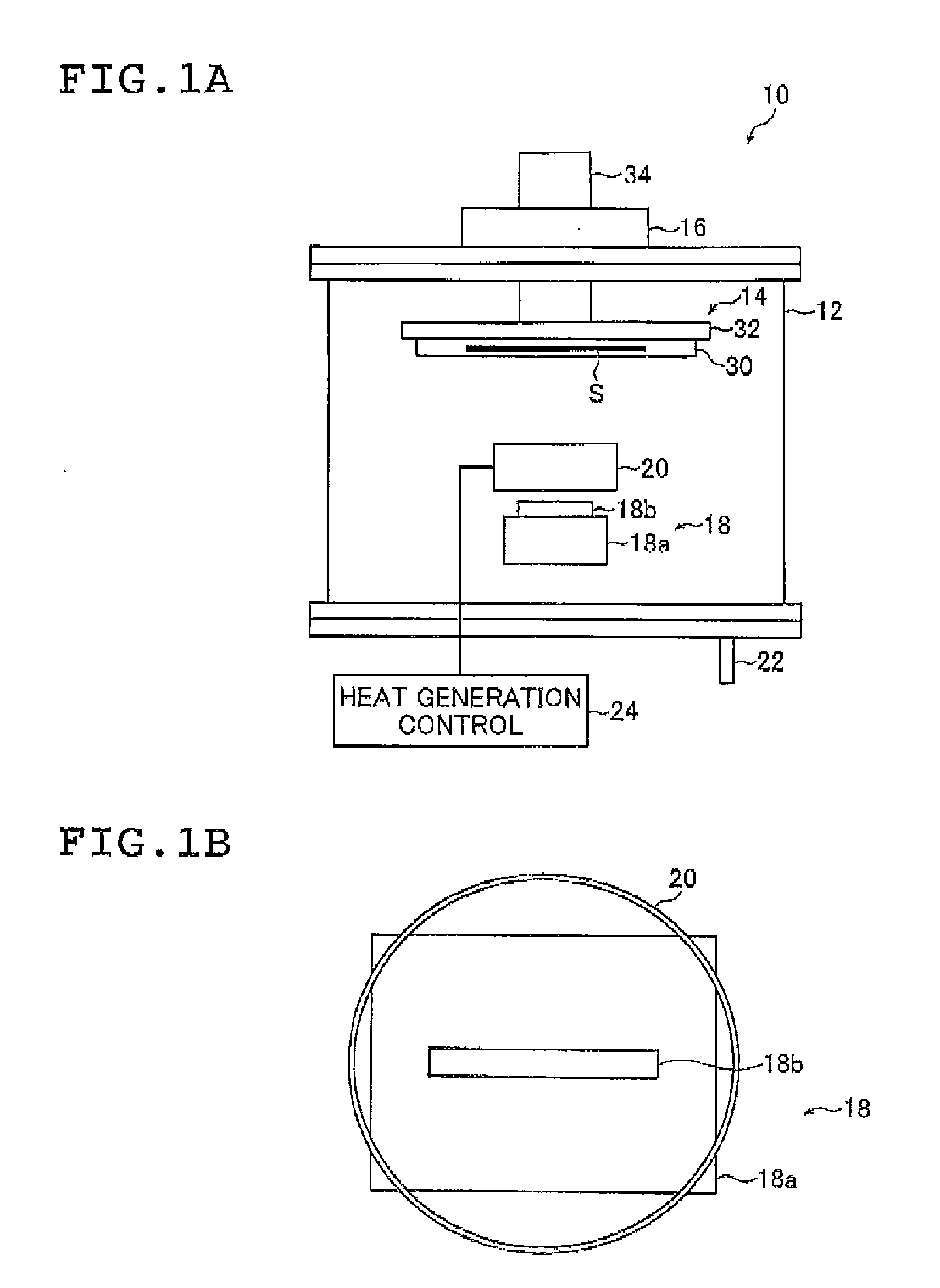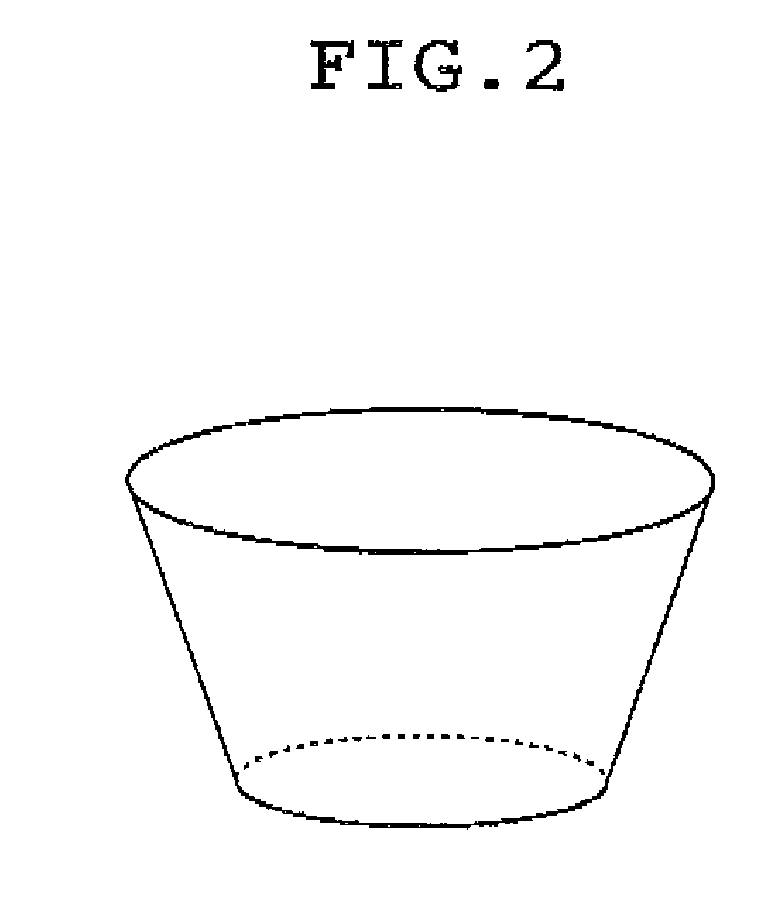Vacuum evaporation method
a vacuum evaporation and vacuum technology, applied in vacuum evaporation coatings, chemical vapor deposition coatings, coatings, etc., can solve the problems of reducing affecting the and affecting the quality of substrates and phosphors. , to achieve the effect of improving the utilization efficiency of film-forming materials and improving efficiency
- Summary
- Abstract
- Description
- Claims
- Application Information
AI Technical Summary
Benefits of technology
Problems solved by technology
Method used
Image
Examples
example 1
[0143]The evaporation apparatus 10 shown in FIGS. 1A and 1B was used to form a phosphor layer on the substrate S.
[0144]A tantalum crucible for resistance heating was used for the crucible 18 and a type R (platinum-rhodium) thermocouple was inserted into and fixed to the crucible 18. The upper surface of the chimney 18b (i.e., vapor outlet) was in the shape of a rectangle with a size of 8 mm×60 mm.
[0145]The crucible 18 (more specifically the crucible body 18a) was charged with 600 g of powder of cesium bromide (CsBr having a melting point of 636° C.).
[0146]A cylinder made of tungsten which has an outer diameter of 80 mm, a height of 60 mm and a plate thickness of 0.2 mm and whose upper and lower surfaces are open was fixed as the heating element 20 at a position of 0 mm just above the crucible 18 (upper end of the chimney 18b), in other words, at a position at which the upper end of the chimney 18b was flush with the lower end of the heating element 20). As shown in FIG. 1B, the heat...
examples 2 and 3
[0159]Example 1 was repeated except that an electric current of 250 A was applied to the heating element 20 to heat it to a temperature of 443.5° C. (in Example 2) and that an electric current of 380 A was applied to the heating element 20 to heat it to a temperature of 568° C. (in Example 3), thereby forming a phosphor layer (cesium bromide layer) on the substrate S. Then, the material utilization efficiency was calculated.
[0160]As a result, a material utilization efficiency of 57.2% was obtained for each case.
PUM
| Property | Measurement | Unit |
|---|---|---|
| temperature | aaaaa | aaaaa |
| photosensitive | aaaaa | aaaaa |
| luminescence | aaaaa | aaaaa |
Abstract
Description
Claims
Application Information
 Login to View More
Login to View More - R&D
- Intellectual Property
- Life Sciences
- Materials
- Tech Scout
- Unparalleled Data Quality
- Higher Quality Content
- 60% Fewer Hallucinations
Browse by: Latest US Patents, China's latest patents, Technical Efficacy Thesaurus, Application Domain, Technology Topic, Popular Technical Reports.
© 2025 PatSnap. All rights reserved.Legal|Privacy policy|Modern Slavery Act Transparency Statement|Sitemap|About US| Contact US: help@patsnap.com



